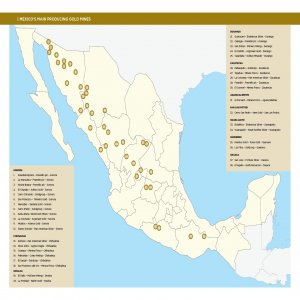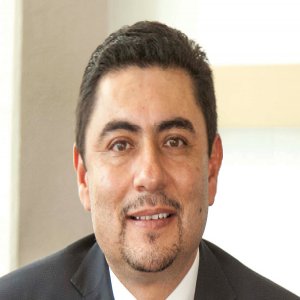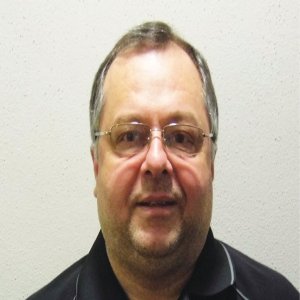Bold Acquisition Strategy Paying Off for Mid-Tier Producer

STORY INLINE POST
Q: You once said that Mexico was one of the only countries left in the world that was friendly to mining. How did you come to this conclusion?
Mexico holds many benefits for the mining industry. In this country, you can still find properties with mining potential that have seen little or no modern exploration. When you venture out into the countryside to review these mineral properties, the people are generally friendly and welcoming. In the places that Argonaut mainly explores, the logistics are relatively good, translating to important cost benefits when moving a project forward. I will say that, on occasion, obtaining surface rights can be difficult in Mexico, but overall there is a good atmosphere for doing business and developing properties here. If you discover or acquire a mineral deposit in Mexico, there is a good chance you can eventually develop it. Additionally, the risk of Mexico nationalizing your deposit or mine is pretty low. It is worth making an exploration investment in Mexico because, in my opinion, the chances for discovery and development success in this country are rife.
Q: Argonaut Gold is well on the way to becoming a mid-tier gold producer. How has the company’s growth strategy evolved?
A: Argonaut was formed in late 2009 when the company bought Castle Gold, which operated the El Castillo mine in Durango. A year later, we bought a company called Pediment, which included the San Antonio gold project in Baja California Sur and the La Colorada gold-silver project in Sonora. In our short history, our growth strategy has always been formed around acquisitions. We initially bought Pediment because we wanted to develop the San Antonio project, but three years later, we are still chasing the necessary permits to push the project into production. This delay is related to municipal politics but, for the most part, we enjoy strong local support and we are making headway in our permitting efforts. Our most recent acquisition was San Agustín in December 2013. During 2014, the company completed nearly 25,000m of resource drilling there, leading to an updated resource of 1.3 million gold equivalent ounces. San Agustín is yet another example of our acquisition-based growth strategy in Mexico. So far, Argonaut Gold has been successful with this strategy.
Q: What are the various criteria you look at before deciding to make an acquisition?
A: From an exploration perspective, we look for obvious potential to expand a resource. For example, our first acquisition, El Castillo, was a small gold mine producing about 20,000oz of gold a year. We could see that they were mining an outcropping portion of a much larger mineral system. The potential to at least double the resource and substantially increase production was clear, and now El Castillo is producing at over 90,000oz of gold per year. With the Pediment acquisition, we significantly increased the resources at San Antonio and La Colorada, the latter of which is expected to produce over 35,000oz of gold in 2014. The business model is based on identifying distressed, or seemingly marginal properties where a deal is not prohibitive, and where there is a clear upside to increasing the resource. Our latest acquisition, San Agustín, had an announced oxide resource of 400,000oz of gold and our drilling allowed us to estimate a new resource of 1.3 million gold equivalent ounces. This acquisition clearly followed the Argonaut growth plan and is now a success story for the company. San Agustín is in the engineering and prepermitting phase right now. We expect to complete a PEA by the end of 2014 and hope to commence mine construction in 2015, with actual production coming as soon as possible after that. San Agustín has an average gold grade under 0.4 g/t, making it a deposit which many companies would not even consider. Argonaut, on the other hand, is comfortable with this grade and deposit type as it is very similar to that of El Castillo. Our success at El Castillo is expected to be mirrored at San Agustín. To be successful, a company must see beyond the risk and be willing to take a chance. Argonaut is an example of this.
Q: You moved from 20,000oz to 90,000oz at El Castillo in five years. How did your exploration program keep up with such an aggressive production expansion?
A: Once we acquired El Castillo, our exploration group conducted an aggressive grid drilling program that pretty much defined the limits of the mineral deposit. This drilling allowed an updated resource estimate on which a significant mine expansion was designed. We just went in there and drilled the deposit out as quickly as we could. Every year, the exploration department does some remodeling of the resource and any necessary additional drilling, in order to better understand the mineralization. Exploration works closely with operations at both of our mines to update the deposit model for more efficient mine planning.
Q: Which strategy is Argonaut Gold following to minimize operating costs?
A: The San Agustín project is being designed as an open pit heap leach operation very similar to our operating mines, El Castillo, and La Colorada. Argonaut has developed significant expertise for constructing and operating these types of mines; we know what we are doing and how to keep costs down. As well as being low-capital operations that produce less than 100,000oz a year, all of our deposits in Mexico share certain things in common; low strip ratios, relatively low capital costs, and decent heap leach recoveries of gold and silver. With our cash flow and expertise we are better positioned than many of our competitors, and the deposits that we focus on in Mexico are too small to fit the size criteria of the major players. We fill a niche for smaller, low grade deposits that can be open-pit mined and heap leached at low cost. Even at the current low metal prices, we are able to keep a level of exploration going that allows us to keep looking for the next Argonaut mine.




















